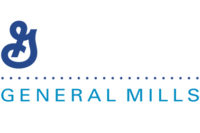Nuts & Bolts
6 trends shaping consumer product innovation in F&B

Photo courtesy of Getty Images/Petar Chernaev
Tate & Lyle PLC, a global provider of food and beverage solutions and ingredients, revealed six key trends that are shaping consumer product innovation in the food and beverage market.
“By understanding how values, behaviors and appetites are changing, and the drivers behind these shifts, food and beverage brands can launch products that meet the needs of consumers today and better anticipate how these will evolve,” said Beth Nieman Hacker, market research director at Tate & Lyle.
The company’s global market research team conducted its own consumer research, studied hundreds of papers and data points and, together with their commercial teams worldwide, identified the following key trends driving consumer purchases:
Transparency—increasing numbers of consumers are seeking healthy food and beverage products they can trust and want to know the source of the ingredients in those products. The clean label movement continues to evolve, moving from all-natural claims to communicating how products are made[1].
Plant-Based—Consumers are focused on health and sustainability, opting for products that are better for them and better for the planet. They are drawn to products that are plant-based because positive health outcomes and environmental impacts are associated with plant-based eating[2].
Sugar Reduction—Consumers are looking for ways to get healthy and stay healthy. One recommendation to achieve better health is to reduce the amount of sugar in their diet. However, consumers are torn between reducing sugar and maintaining a great taste experience[3].
Gut Health—Globally, consumers are not getting enough fiber daily. Fiber helps support gut health and consumers are interested in getting more of it in their diet. As awareness of gut health and the benefits a healthy gut can provide continues to grow, more consumers will look for products with gut health benefits[4].
Convenience—Consumers are digitally connected and time poor, seeking ease, efficiency and instant gratification from the products they buy, including food and beverages. While convenient products meet the needs of global consumers amidst their busier, more stressful lives, this presents formulation challenges for manufacturers[5].
Better-for-you Snacking—Snacking is an important meal occasion; however, consumers are prioritizing their health. “Better for you” snacking products are an obvious choice to meet consumers’ health needs[6].
Resources
[1] 84% read ingredient labels, globally. Tate & Lyle Proprietary Research, 2020, 14 countries, percentages are “always” or “sometimes”
[2] 48% of consumers say that they have changed their diets in the last two years in order to lead a more sustainable lifestyle. GlobalData 2020 Market Pulse Survey, Asia Pacific and Latin American, September 2020
[3] 58% of consumers say healthfulness has an impact on buying food and beverages. International Food Information Council Foundation, 2021 Food & Health Survey, April 2020
[4] 53% of global consumers plan to eat or drink more fiber. T&L Global Consumer Ingredient Perception Research, 14 countries, 2020
[5] 91% of global consumers are interested in products that save them time and effort. GlobalData Trend Sights 2020
[6] 55% of global consumers say that they expect snacks to offer a nutritional boost. FMCG Gurus, January 2021, Global
Looking for a reprint of this article?
From high-res PDFs to custom plaques, order your copy today!







